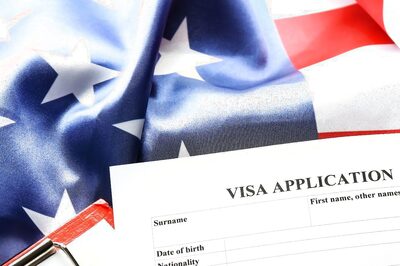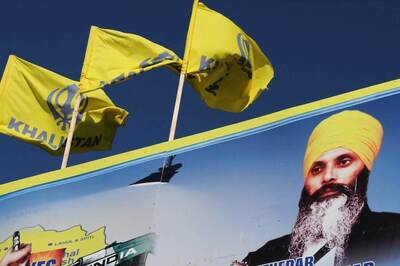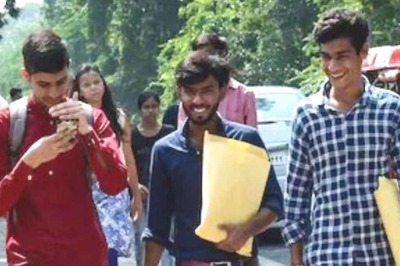
views
Even as the European Union has got politically weakened by Brexit, internal tensions between western European countries and eastern ones, notably Hungary and Poland, over issues of democracy and European values, problems of migration, Islamism, terrorism and rise of right-wing forces, and, in addition, economically enfeebled by the still-uncontrolled COVID crisis, India has decided to draw closer to it, driven by its own political and economic challenges.
The European Union (EU) as an entity is India’s biggest economic partner, with a roughly balanced two-way trade amounting to $115.6 billion (2018-19), the second largest destination for Indian exports (14 per cent of total). EU’s share in foreign investment flows into India increased from 8 per cent to 18 per cent in the last decade, making it the largest investor in India, with a total investment of 75.8 billion euro in 2019. Some 6,000 European companies are present in India.
With this level of economic ties, the absence of a serious effort to negotiate a Free Trade Agreement (FTA) and an Investment Agreement would seem an anomaly. Negotiations for a comprehensive FTA were launched in 2007 and suspended in 2013 because the two sides did not share the same level of ambition. The EU’s website says that it wants an agreement that is “economically meaningful, delivering real new market openings in all sectors to both sides, contains a solid rules-based component, and includes a comprehensive trade and sustainable development chapter, notably to deal with social and environmental impacts.” This is tough, demanding language that seeks to lay down EU’s terms of engagement. The website contains strictures against India’s trade regime, regulatory environment, technical barriers, deviation from international standards and agreements, and discriminatory legislative and administrative measures. The EU has issues of fair market access and full respect of WTO obligations with India. All this has relevance to the India-EU Leaders summit that took place on May 8.
Free Trade Agreement on the Cards?
India and the EU began negotiations on a broad-based Bilateral Trade and Investment Agreement (BTIA) in 2007. Today, the two sides are no longer looking at a single Trade and Investment Agreement; they will negotiate the two agreements concurrently but separately, which means the objective is no longer a BTIA. This should theoretically make the negotiation process easier to handle. The agreement on Geographic Indicators will also be negotiated separately and included in the FTA, if concluded on time.
Apparently, a lot of technical work has already been done prior to the summit, including political-level discussions between Commerce Minister Piyush Goyal and the EU Executive Vice-President and Commissioner of Trade Valdis Dombrovskis, with the first meeting of the EU-India High Level Dialogue on Trade and Investment held in February this year wherein it was agreed that negotiations for an ambitious, comprehensive and mutually beneficial agreement will begin once the respective approaches and positions are close enough.
The Indian side was very keen on announcing the resumption of FTA negotiations for the summit to be seen as a political success. Rightly so, as a continuing blockage would hinder the development of broader India-EU bilateral ties. Having walked out of Regional Comprehensive Economic Partnership (RCEP) and facing economic headwinds, India is now keen to conclude such agreements, as reflected also in the decision on an Enhanced Trade Partnership with the UK. The EU side had laid down certain pre-conditions for resuming FTA negotiations and much effort had to be made to convince the EU bureaucracy to agree to it as a summit outcome. In this, the host of the summit, the Portuguese Prime Minister, whose goodwill for India is such that he displayed his OCI card on screen during the proceedings, played a very active role.
The FTA is mentioned, however, only in para 17 of the India-EU joint statement. The language remains blunt when it says, “We agreed that in order to create the required positive dynamic for negotiations, it is imperative to find solutions to long-standing market access issues.” There is agreement on creating joint working groups on regulatory cooperation on goods and services, including green and digital technologies, and on resilient supply chains, building on the experience gained from the COVID-19 pandemic.
The Indian side is optimistic about progress because of an understanding that the negotiation process would be overseen at the political level and not left to the bureaucracy alone, as proposed by Prime Minister Narendra Modi. The High-Level Dialogue on Trade and Investment has been tasked to ensure progress. It will naturally take time to conclude the FTA. The pre-FTA discussions will begin in the coming weeks, a scoping paper will need to be prepared. However, a lot of negotiations have already taken place on labour standards, government procurement, geographic indicators—issues on which India was earlier reticent.
On COVID, Climate Change & Clean Energy
The COVID pandemic inevitably figured at the summit. The joint statement refers to the need for safe, equitable and affordable access to COVID-19 vaccines, diagnostics and treatments, the positive role of the Access to COVID-19 Tools Accelerator (ACT-A), the COVAX Facility as well as India’s Vaccine Maitri. Both sides have agreed to cooperate on resilient medical supply chains, vaccines and the Active Pharmaceutical Ingredients (APIs).
However, on the India-South Africa initiative at the WTO to temporarily suspend the TRIPS provision on patents, therapeutics etc., the joint statement is silent. The EU is not happy with the US decision to support (on vaccines only) the India-South Africa proposal without consulting it, and while it does not want to be seen as opposing it, Brussels has stated its willingness to discuss it as a long-term solution, arguing that the immediate need is to ramp up vaccine production and export. Germany has openly opposed the US proposal, as has the Big Pharma, both in Europe and the US, and without German support, the EU cannot back the India-South Africa initiative.
Climate change is a core issue for the EU. The first meeting of the EU-India High-Level Dialogue on Climate Change was held on April 28 in preparation for the summit. At the summit, India’s achievement as the only G20 country that has met its Paris Agreement obligations was apparently appreciated. India expressed its willingness to do more but pointed to funding and technology needs, as well as the preservation of its development space. The joint statement does not refer to a fixed year for achieving carbon neutrality, as India would not have agreed to it. It simply refers to a shared “deep commitment to ensuring that the transition towards a low carbon future is just and equitable within our societies as well as sharing lessons in this respect”. The paragraph on climate change, given the international centrality of the subject, is quite bland. India features positively in the references to the EU’s membership of the Coalition for Disaster Resilient Infrastructure, its support to the International Solar Alliance, as well as India’s leadership in promoting solar power. But this is a subject on which a major diplomatic tussle lies ahead at the COP26 in Glasgow in November this year.
The India-EU dialogue covers the EU-India Clean Energy and Climate Partnership. The EU-India Energy Panel will work to accelerate the deployment of renewable energy, promote energy efficiency, collaborate on smart grid & storage technology, modernise the electricity market, exploit the potential of hydrogen, work on electrification of the transport sector, water management, smart and sustainable urbanisation etc. The two sides have agreed to set up an EU-India Senior Officials’ Dialogue to deepen bilateral cooperation on WTO issues, including reforms.
A highlight of the summit was the launch of a sustainable and comprehensive Connectivity Partnership that will promote a transparent, viable, inclusive, sustainable, comprehensive, and rules-based connectivity. This will include cooperation in projects, notably in Africa, Central Asia and the Indo-Pacific, in order to build digital, energy, transport and people-to-people connectivity. The early operationalisation of the Joint Task Force on Artificial Intelligence is envisaged, including close cooperation on global digital standards and network security including in relation to 5G technology and beyond 5G. It was agreed to deepen technological cooperation on Quantum and High Performance Computing, to be promoted at the High-Level EU-India Digital Investment Forum later this year.
Safe and secure cross-data flows between India and the EU has been a major issue. Both sides have agreed to work on enhancing convergences between regulatory frameworks and to ensure a high level of protection of personal data and privacy, including through “possible” data adequacy status decisions. For India seeking data adequacy status is crucial for trade ties. The Human Rights Dialogue will have its next meeting in 2022.
EU Position on Indo-Pacific
There was not much discussion on the Indo-Pacific as time ran out apparently. In April, before the summit, the EU Council had approved the conclusions on EU’s Indo-Pacific policy. The EU intends to reinforce its strategic focus, presence and actions in an area spanning the east coast of Africa to the Pacific island states, develop partnerships in defence and security, including maritime security etc. India would welcome more involvement of European powers in this space.
The joint statement contains language on the Indo-Pacific that subscribes to India’s position. The EU also appreciated India’s Indo-Pacific Oceans Initiative. The two sides have welcomed the holding of their inaugural dialogue on maritime security and foresee enhanced cooperation between the Indian Navy and EUNAVFOR Atalanta in the Indo-Pacific region. Both have expressed a readiness to explore negotiations for a framework partnership agreement. India would be interested in exploring ties with the EU’s permanent structured cooperation in the defence area.
The Indian side sees the summit as positive in its conclusions and warm in sentiments. The meeting itself is seen as a big outcome, as it was the second such Leaders’ Meeting that the EU has held with any country. The summit was not confined to the EU leadership at Brussels but included leaders of all the 27 EU members, with 19 speaking on the occasion.
Read all the Latest News, Breaking News and Coronavirus News here. Follow us on Facebook, Twitter and Telegram.




















Comments
0 comment